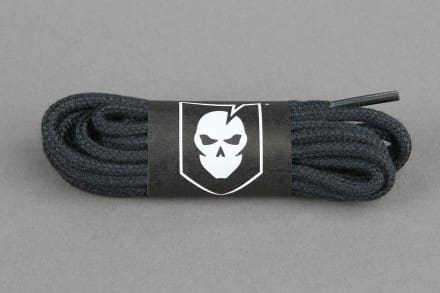ITS’ Kevlar Escape Laces are, according to the company, the first 100% Kevlar footwear laces on the market designed for escaping illegal restraint. They are made of 100% Kevlar, with 360 lbs. of tensile strength, and due to their material composition are fire and chemical resistant. Naturally, the laces are designed to be used in a saw-like fashion to cut through restraints such as zip ties, although their durability also makes them excellent as laces for anyone in professions involving flames and sparks, such as firefighters, welders, and construction workers; they can also be used as a bow drill fire starter line that won’t melt due to the friction.
The ITS Kevlar Escape Laces are available in 54″, 60″, and 72″ sizes, and are made in the USA.
store.itstactical.com/its-kevlar-escape-laces
Tags: ITS Tactical



If you can use them to saw through restraints, wouldn’t they chew up the eyelets and tongue on your shoes?
The friction saw method works because it concentrates abrasion/heat on one part of the restraint (ziptie/tape) using a wide portion of the lace which disperses the abrasion/heat. Kevlar is a good material for this because it is heat resistant. You can get yourself out of most hardware store zipties using standard laces, though.
I think the other answer is that it’s the same reason for why your normal shoelaces don’t chew up the eyelets: they’re not moving back and forth all that much when you have them laced up, not like if you were using them like a saw.
Kevlar isn’t actually an abrasive, in fact most cord is treated with PTFE to improve UV resistance, making it quite smooth.
Cord saws cut by producing friction heat in a narrow area, that burns/melts through plastic, tape, and plastic based ropes.
Kevlar is useful for this because of it’s high (800+ degree) melting point, as well as abrasion resistance. This allows narrow strands of it to cut through much thicker materials then would seem possible.
I’ve cut through 1.5″ PVC pipe with 200lb Kevlar faster than I can with a hacksaw (although the edges of the pipe get furry with melted plastic, not ideal for DIY.)
Friction heat comes from abrasion which comes from the surface of the woven lace regardless of the material or treatment… but, yeah, what you said.
Somebody who is more knowledgable of the material than me- would these be possible in tan ( for .mil application)
Dupont does make tan Kevlar yarns, so it’s probably a matter of time.
Issue tan boot laces will zoom through non-metallic restraints.
Anybody else notice that your problem now becomes having to quickly re-lace your boots so you don’t end up back in the same restraints minus footwear? I would also assume the saw-method would be somewhat difficult if the hands were bound?
taking this prepper stuff a bit far
The same can be done with 550 cord.